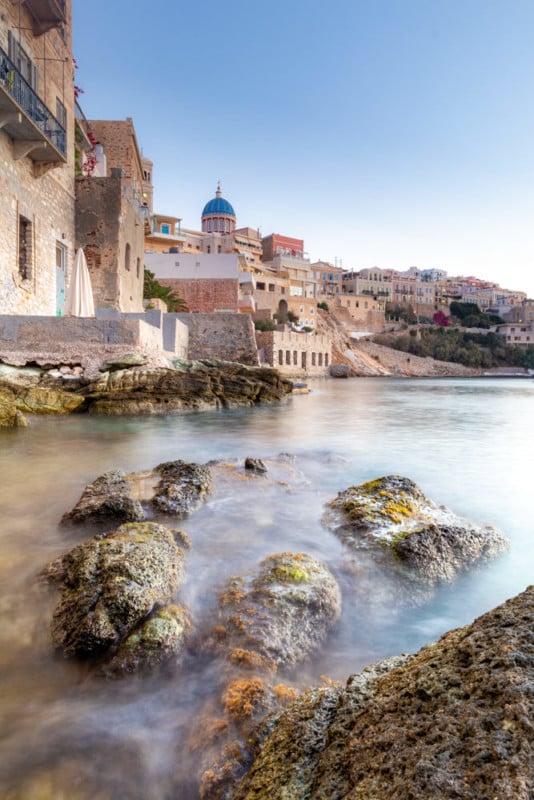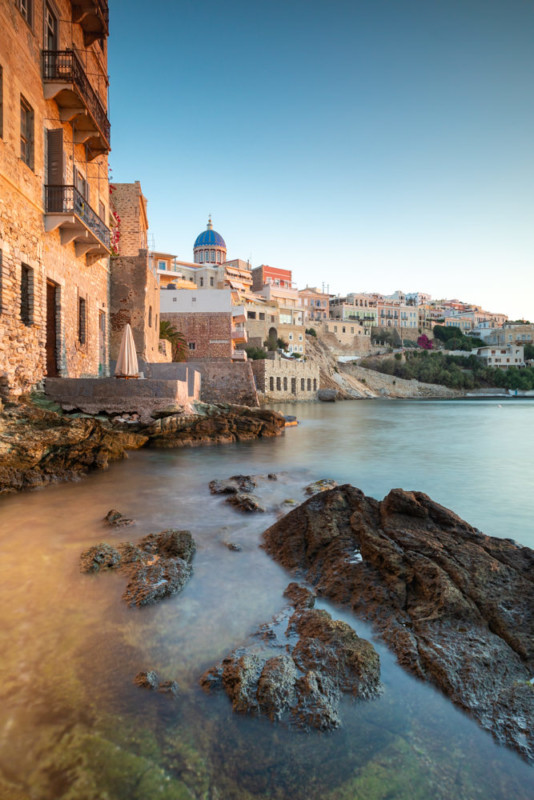Use Your Flip-Flop as a Graduated ND Filter
Can you use a flip-flop — or any solid item, for that matter — as a graduated neutral density (AKA grad ND) filter? Sure. But, it doesn’t work in all situations.
Does this Photography Hack Work?
Sure it works. Below are the two photos I took – totally unedited. On the left, you have the image directly out of the camera – no flip-flop. I shot this image at f/16, 8 seconds, ISO 100 and 15mm on the Canon M50. On the right, I shot the exact same settings on the camera. However, I held the flip-flop in front of the top half of the lens for 7 of the 8 seconds of exposure.
![]()
How Does it Work?
It’s pretty simple: it just cuts back the amount of light that gets into that part of the image by physically blocking it.

It was simple math to work it out. I wanted to cut 3 stops of light out of the sky. So, from my camera’s metered exposure of 8 seconds, I counted down 3 stops: 4 seconds = 1 stop, 2 seconds = 2 stops, 1 second = 3 stops. Essentially, I needed to cut out 7 seconds of light from the top half of the image to equal a 3-stop grad ND filter. Or, in other words, I needed to expose the top half of the image to the light for 1 second.
So, I pressed the shutter, waited for a second of exposure, and then shook the flip-flop in front of the lens for the rest of the exposure. Shaking it gave a bit of a soft gradient.
Doesn’t The Flip Flop Get in the Photo?
Not on a long exposure when the camera’s focus is farther away from the lens — it will essentially be out of focus and then ghosted. Especially if you move it around as the shutter is released.
The one thing I haven’t determined (because I didn’t have multiple flip-flops) is if different colored flip flops would add a different color cast to the image. I imagine it would.
I should also note that you could probably do this hack with any sort of item. It doesn’t need to be a flip-flop. Use the brim of your hat. You could just use your hand too.
![]()
Why Not Blend Images?
Laziness. Nothing else aside from laziness and curiosity. It should be noted that lots of people don’t use Photoshop or just don’t like using it. So, sure, you could blend two images (one shot at 8 seconds, and another at 1 second) using the sky from the 1-second exposure, and the foreground from the 8-second exposure. But, it’s fun to play around.
I mean, what’s the point of photography if you can’t have some fun and experiment with it.

Will This Work on Any Photo?
No. The exposure needs to be long enough that the flip-flop ghosts out.
I think if you were to do this on a 1/100 second exposure you’d freeze the flip-flop, and you’d have an extremely hard edge. In playing around with this over the years, I’ve found that the exposure needs to be at least about 4 seconds for the best results.
About the author: Brendan van Son is a travel photographer and YouTuber originally from Canada. The opinions expressed in this article are solely those of the author. You can find more of Van Son’s work on his website, Twitter, Facebook, Instagram, and YouTube. This article was also published here.